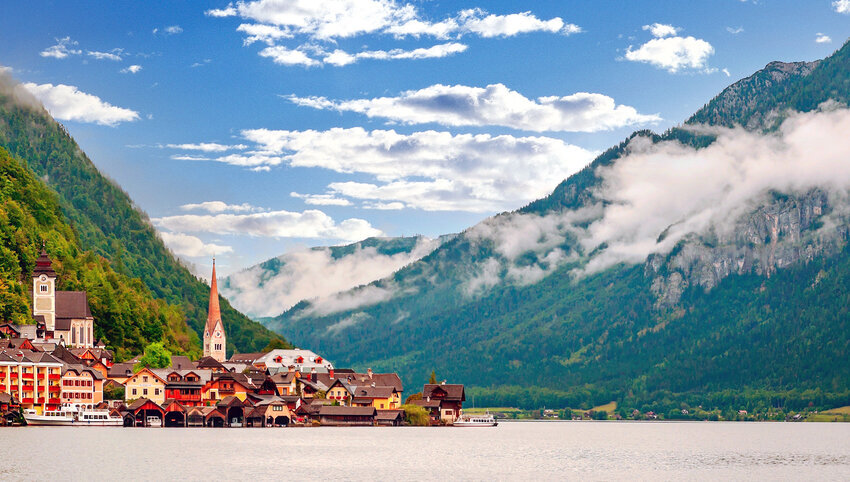London, Paris, Barcelona, Florence — these cities and all that they offer come immediately to mind when you think of traveling in Europe. Yet, if you always follow the familiar, you miss some amazing and unique experiences, and Europe is packed with cities and landscapes to suit every inclination. For fresh experiences, unfamiliar jaunts, and travel stories no one else can match, try venturing to the spots tourists often miss. They’re worth it!
Alpbach, Austria
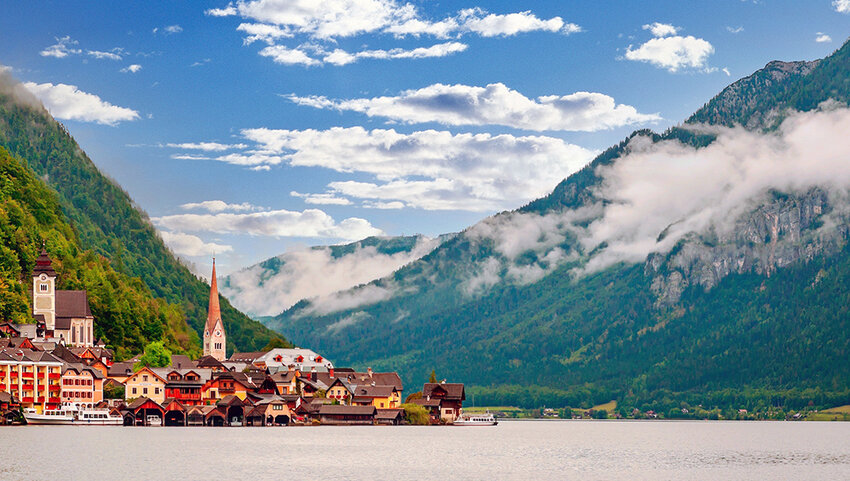
Just east of the popular tourist destination of Innsbruck is Alpbach, an equally beautiful, yet quieter and more remote, Tyrolean town in western Austria. It was even voted the most beautiful village in the country. With traditional wooden buildings scattered across rolling green hills and a backdrop of the rugged Alps, it's clear how this village gained its accolades. A charming stay in a traditional Tyrolean inn will leave visitors in awe of the natural beauty of the countryside.
The Ski Juwel Alpbachtal Wildschönau boasts year-round outdoor activities to enjoy the stunning scenery. It is regarded as one of the best ski resorts in the country. With a variety of slopes and snow sports in the winter, and camping, hiking, biking, and gondola rides during the summer, there is no shortage of outdoor fun here. Despite its remote location, Alpbach’s annual European Forum Alpbach draws an impressive crowd of great minds in politics, culture, economy, and science — including Nobel Prize laureates — to strive towards innovation.
Kruja, Albania
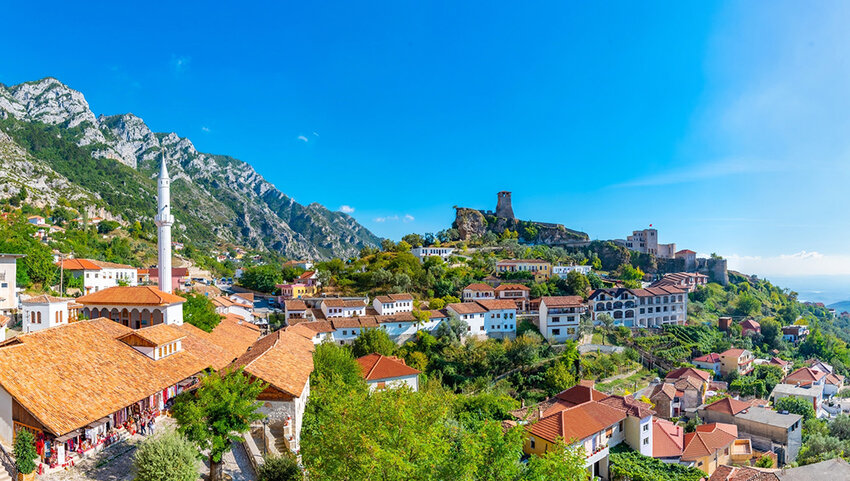
Most tourists in Albania flock to its bustling capital city (Tirana) or its shimmering Mediterranean coastline — and for good reason — but there is plenty more to do and see in this Balkan country. Just north of Tirana is Kruja, a quaint, traditional Albanian town nestled in the mountains that is well-known to Albanians but rather unfamiliar to tourists. Kruja Castle (which features a few guest rooms) sits at the southern end of town, perched high on a hill — on a clear day, you can see all the way to Tirana. The ancient fortress dates back to the 5th century, and has been fending off foreign invaders for 1,500 years. Visitors to the castle will learn about Gjergj Kastriot Skanderbeg, a national hero who defended the stronghold from the Ottomans for 35 years. Located across from the castle is his namesake museum Skanderbeg Museum.
Also worth visiting is the 400-year-old Kruja Bazaar, one of the oldest in the country. It is filled to the brim with colorful textiles, jewelry, and pottery — the perfect place to purchase an Albanian souvenir. There are also ample hiking opportunities in Kruja (both guided and self-guided) to explore unique sights in the mountains, including Sari Salltik’s Shrine, a 13th-century temple.
Colmar, France

Usually overshadowed by Strasbourg, its larger neighbor to the north, Colmar is a quintessential Alsace town with half-timbered buildings, romantic canal-side dining, and boutique shopping. Its proximity to the German border has melded two cultures into one. Colmar is best known for its charming medieval old town with cobblestone streets. This is also where “Little Venice” is located, named for its meandering canals that resemble the famous Italian city. The nearby Fishmonger’s District is one of the most photographed places in town, known for its colorful buildings that line the waterfront.
Colmar is also on the Alsace Wine Route — it’s a perfect place to sample a local Riesling or Gewürztraminer through one of many tasting tours. The birthplace of Auguste Bartholdi, who created the Statue of Liberty, one highlight of Colmar is its many museums, which cover an array of topics, including art, toys, and even wine. There is no best time to visit Colmar, it is lovely during every season. Spring brings an array of beautiful windowsill blooms, summer offers sunny days to enjoy patio dining, fall is marked with warm colors and mild temperatures, and winter brings six Christmas markets to enjoy.
Menorca, Spain

Not to be confused with its nearby sister island, Mallorca, Menorca is one of four main Balearic Islands (the other two are Ibiza and Formentera) located in the Mediterranean Sea. The well-traveled islands of Ibiza and Mallorca are known for their nightlife, but Menorca is an unspoiled hideaway, with laidback beaches and quieter, less crowded dining and entertainment options. The low-key island also boasts some of Spain’s best beaches — over 100 of them — with powdery white sand for sunbathing and swimming, and wild and rugged coves perfect for hiking and snorkeling.
The fun in Menorca doesn’t end when the sun goes down, but this is a different kind of nightlife than its sister islands. Menorca became a certified Starlight Reserve and Starlight Destination in 2019. Such locations have very little light pollution and are excellent for observing the stars, and it is the only Mediterranean island to receive both of these awards. When it’s time to eat, the cuisine in Menorca is hard to beat. Try local méhon cheese (produced by Menorcan farmers) and caldereta de langosta (lobster stew), Menorca’s most famous dish. It’s no wonder Menorca was selected as the European Region of Gastronomy for 2022.
Braga, Portugal

Portugal is currently the darling of many American expats, and it’s no wonder with its miles of pristine coastline, Algarve region, charming historical villages, gorgeous azulejos (painted tiles), and the cosmopolitan city of Lisbon. For travelers, Porto is the usual destination in the north, but Braga, northeast of Porto, offers a rich and authentic Portuguese experience you might not expect.
Called Bracara Augusta by the early Romans, Braga offers a deep history and many architectural wonders. Don’t miss the Braga Cathedral (opt for the extended tour — it’s worth the extra ticket price) or the Santa Barbara Gardens, which are flanked by an ancient stone palace once the domicile of the Archbishop. Stunning terraced gardens await you outside the Biscainhos Palace, and the Raio Palace offers an Insta-worthy Baroque/Rococo facade covered in blue azulejos. The grand staircase of The Sanctuary of Bom Jesus do Monte, just outside Braga, won’t disappoint. Finally, no trip to Braga is complete without a walk through the city center to enjoy its many shops and restaurants. Be sure to wander into Centésima Página, a wonderful bookshop with an outdoor cafe at the back, and stop for a snack at an iconic corner coffee house, the Café A Brasileira.
Outer Hebrides, Scotland
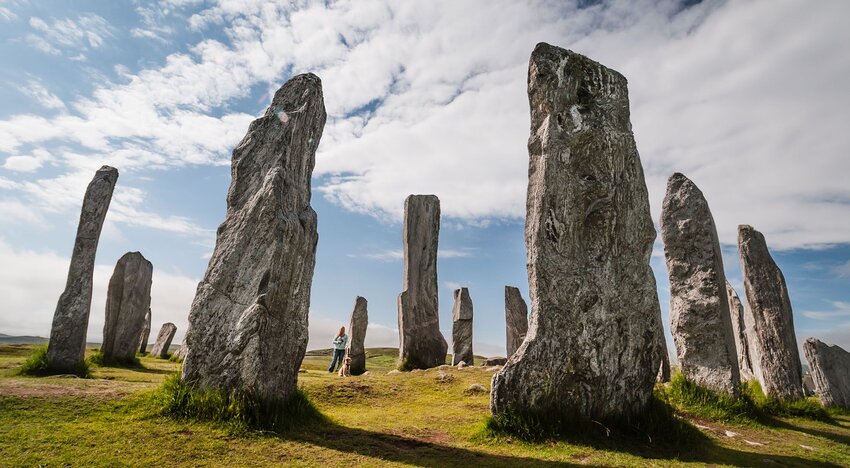
For many, Scotland conjures up the sound of bagpipes across a highland glen or the glow of Edinburgh Castle at night. But there’s so much more to experience. The Outer Hebrides are a network of windswept islands definitely worth a visit for those who appreciate raw nature and rugged landscapes. Rife with lochs, both seawater and fresh, and offering long stretches of exquisite beaches (visit Luskentyre on the Isle of Harris), the western edges of the islands are covered mostly in peat moors or in machair, a low-lying dune pastureland. This scenic beauty is protected from development, so a trip to the Outer Hebrides will allow you to step away from the hubbub of crowded European cities and to embrace the slower pace of days devoted to walking, hiking, and visiting Iron Age ruins.
Here you can visit the finest standing stone ring in Scotland, The Callanish Stones, built around 2900 B.C. and 15 feet high. If castles make you swoon, visit Lews, which rents modernized rooms, or Kisimul, which is surrounded by the waters of Castle Bay. Or, visit the Castle Grounds in Stornoway, which house the Museum nan Eilean, a showcase for all things Outer Hebrides. For a step back in time, head to Gearrannon Blackhouse Village on the Isle of Lewis, where you can book accommodations in a restored blackhouse and learn about crofting, peat cutting, and hand making the famous Harris Tweed. Be sure to stop at the Isle of Harris Distillery for local gin and a snack. A number of ferries service the Outer Hebrides, or you can fly into Stornoway, Benbecual, and Barra airports. Know before you go: The flight times change at Barra based on the tides, because at high tide, the runway is underwater.
Novigrad, Croatia
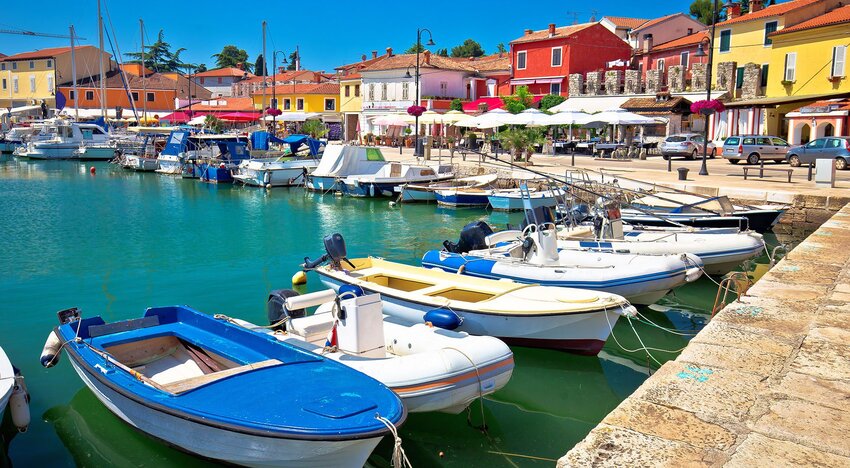
After binge-watching Game of Thrones, you might be tempted to book the next flight to Dubrovnik or Split, Croatia, the two cities where much of the series was filmed. What most visitors to Croatia miss, however, is Novigrad, a small fishing village tucked between two more heavily touristed towns in the northwest part of the country. This sparkling gem has a compact town center featuring great places to eat and green spaces perfect for a picnic lunch. Or, rent bikes and cycle through olive groves and vineyards that produce wines similar to those in Italy.
A central square is dominated by a stone clock tower, and a beautiful crescent of beach will lure water lovers to rent small boats and get out on the crystalline bay. You can also browse the shops and eateries right along the water where boats nose up to the pedestrian path. In this Istrian region of the country, enjoy foods influenced by Italian and other Mediterranean cuisines, including plenty of fresh seafood and pastas. Stay past nightfall to appreciate the glimmer of shoreline lights on the water.
Matera, Italy
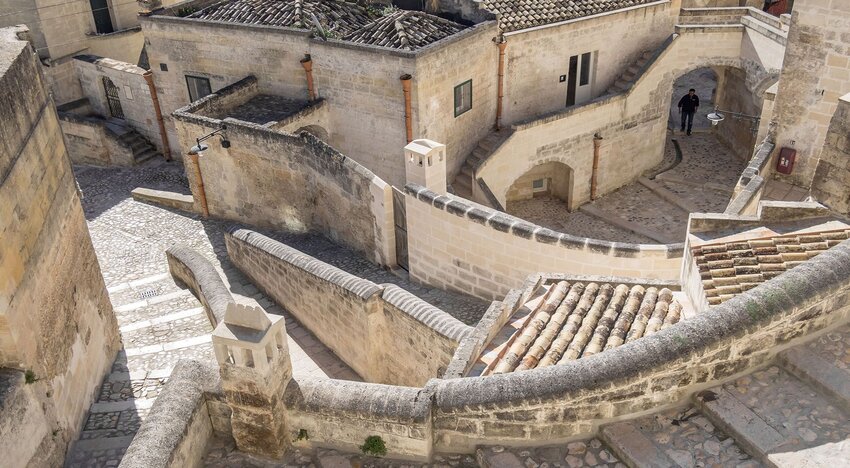
Matera in the southeast of Italy stands out among the lesser known corners of the country and deserves a spot on the list of must-see locales. Wander through the modern part of the city and visit Baroque churches and palaces. Then, head to the show-stopper, the sassi, a series of cave grottoes carved into the rocky limestone hillside, with houses and buildings piled atop one another so that rooftops become pathways, and stone staircases lead through a labyrinth steeped in history. Matera was first occupied as long ago as the 10th millennium B.C. Though it has been renovated, it was named a UNESCO World Heritage Site in 1993, and in 2019 was declared a European Capital of Culture.
The sassi are now peppered with restaurants, museums, hotels, and a lively arts community. For a truly unique experience, book a room in one of the caves and get a feel for what it was like to live within the cliff face millenia ago. Be sure to visit the Matera Cathedral, built in the 1200s, but also make time to explore some of the many tiny chapels in the hillside. Then, wander through the uninhabited caves in Sasso Caveoso on the edge of town for a rustic view of this ancient city. For a spectacular photo-op of Matera, hike down into the ravine and up the other side. If culture is your thing, don’t miss the MUSMA art museum and the Casa Grotta di Vico Solitaria, where you can learn about the earlier inhabitants of the sassi and how they lived.
Stavanger Region, Norway

Founded in 1125, Stavanger is one of the oldest cities in Norway, and the area around the city offers spectacular experiences in nature when you’ve had your fill of urban highlights. In the city, be sure to meander through the streets of Gamle Stavanger, the oldest section, which is taken up with 18th- and 19th-century wooden houses. Visit galleries and small shops, cafes and boutiques, and don’t miss Øvre Holmegate, a street whose colorful buildings beguile even reluctant photographers. Foodies should know that Stavanger is considered Norway’s answer to the culinary region of Lyon, France, and that it hosts Gladmat, one of Scandinavia’s most famous food festivals, in the first few days of July. Music lovers should visit in May to catch MaiJazz, the Stavanger International Jazz Festival, or in August for the International Chamber Music Festival. And, colorful street art is everywhere, from large murals to tiny sculptures, even on buses! If history enchants you, visit nearby ruins dating to the Iron Age.
Built along the coast of Norway, the city includes many small islands. Stavanger has formed itself around water, with five lakes and three fjords. Hiking and boat touring in and around the fjords will afford views of spectacular scenery including deep blue waters and high granite rock faces. A boat tour of Lysefjord is a must; set out for the evergreen islands of the north area, or head to the stunning strand of Jaeren beach. If you dream of going farther afield, you can catch a ferry from Stavanger to the Faroe Islands.
Brasov, Romania
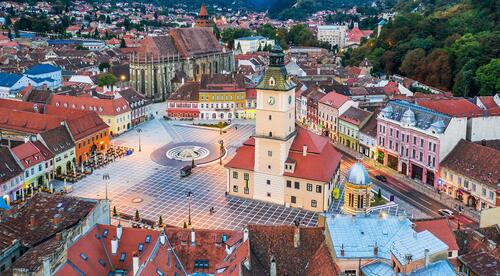
In Transylvania, within driving distance of Dracula’s Castle, sits the quintessential Eastern European town of Brasov. Encircled by the Carpathian Mountains, Brasov boasts medieval Saxon walls and Piata Sfatului (Council Squares). Wander along the narrow, cobbled streets in this 13th-century city, and don’t miss the towering Black Church, named after a fire in 1689 that blackened its walls. Search for the incredibly narrow Strada Sforii (String Street), more like a walkway at only 44 to 53 inches wide.
Head beyond the medieval Saxon gates to the Schei District where, from the 13th through 17th centuries, the Romanians lived because they were banished from the city by the conquering Saxons. Stroll through the neighborhood streets for a lesson in Romanian history. If you’ve developed an appetite or need a treat, look for kurtos kalacs, a sweet, roasted cylinder cake sold from carts in the lanes. For a spectacular view from above, hike or take the cable car to the top of Tampa Mountain. Consider extending your visit and making an excursion to the breathtaking Carpathian Mountains.
Main image by Richard Weeden/Shutterstock.

